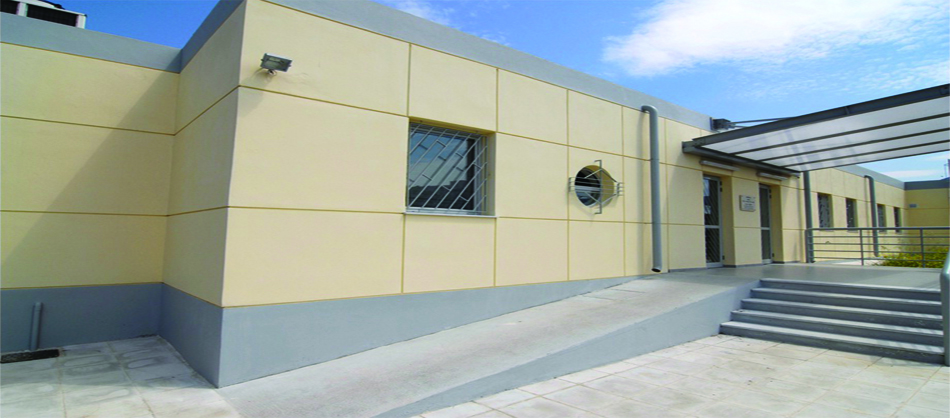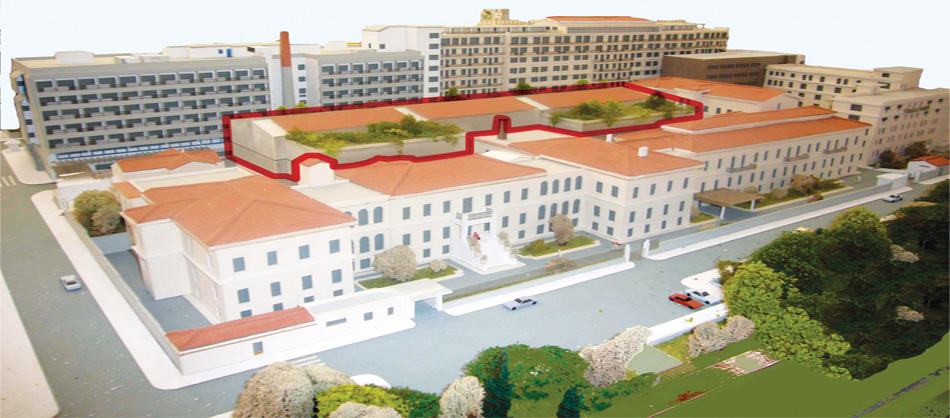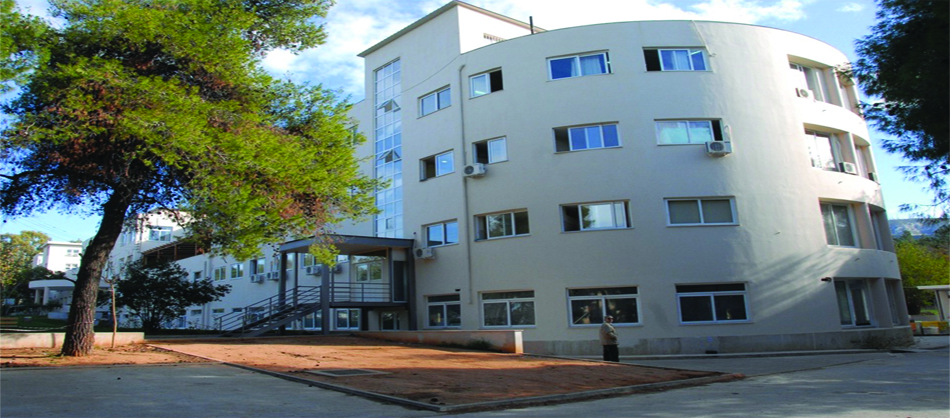RESEARCH TEAM 1
Title: «Sepsis and pulmonary diseases»
Main Researchers: Anastasia Kotanidou – Stelios Orfanos
The main research interest of our laboratory focuses on the study of disorders associated with the Intensive Care Unit, such as sepsis and pulmonary diseases.
Indicative publications (2004 onwards)
1. Decreased bone morphogenetic protein type II receptor and BMP-related signalling molecules' expression in aquaporin 1-silenced human pulmonary microvascular endothelial cells.
https://www.ncbi.nlm.nih.gov/pubmed/32304816
This study demonstrated the in vitro interaction of BMPR2 and Aqp1.
2. Ghrelin alterations during experimental and human sepsis.
https://www.ncbi.nlm.nih.gov/pubmed/31830702
In this study we demonstrated that active and total ghrelin increase in sepsis, in a well-defined cohort of ICU patients. The same applies to the experimental sepsis model used in the study.
https://www.ncbi.nlm.nih.gov/pubmed/31819797
In this study we showed that prophylactic administration of treprostinil maintained lung function, and prevented bleomycin-induced lung injury, fibrosis, and vascular remodelling. This could suggest its potential therapeutic efficacy in pulmonary fibrosis and possibly in pulmonary hypertension related to chronic lung diseases.
4. Longitudinal evaluation of glucocorticoid receptor alpha/beta expression and signalling, adrenocortical function and cytokines in critically ill steroid-free patients.
https://www.ncbi.nlm.nih.gov/pubmed/31756425
In this study we found that GCR expression and hypothalamic-pituitary-adrenal axis function undergo a biphasic response during critical illness. The dissociation between low GCR expression and high cortisol implies an abnormal stress response.
5. Decreased glucocorticoid receptor expression during critical illness.
https://www.ncbi.nlm.nih.gov/pubmed/30703253
The results of this study suggest that critically ill patients have highly variable expression of alpha and beta GCR, and moreover, the levels of both receptors decrease during ICU stay. Taken together, these might explain the differential responsiveness of patients to exogenous steroid administration or to endogenous cortisol secretion.
6. Activated Protein C has No Effect on Pulmonary Capillary Endothelial Function in Septic Patients with Acute Respiratory Distress Syndrome: Association of Endothelial Dysfunction with Mortality.
https://www.ncbi.nlm.nih.gov/pubmed/29549655
In this study we demonstrated that recombinant human (rh)APC administration in septic patients with ARDS did not improve PCEB-ACE activity indices. However, these indices might be useful in the early recognition of septic patients with ARDS at high risk of mortality.
7. The H3 Haplotype of the EPCR Gene Determines High sEPCR Levels in Critically Ill Septic Patients.
https://www.ncbi.nlm.nih.gov/pubmed/29549653
In this study, using the preceding and current sepsis definitions, sEPCR levels and the H3 haplotype were not associated with sepsis severity and the risk of poor outcomes in septic patients; however, the EPCR H3 allele contributed to higher levels of sEPCR.
8. Serum Admission 25-Hydroxyvitamin D Levels and Outcomes in Initially Non-Septic Critically Ill Patients.
https://www.ncbi.nlm.nih.gov/pubmed/29337839
In this study, initially non-septic critically ill patients had very low ICU admission 25-hydroxyvitamin D levels. Severely low vitamin D levels (
9. Highly Selective Endothelin-1 Receptor A Inhibition Prevents Bleomycin-Induced Pulmonary Inflammation and Fibrosis in Mice.
https://www.ncbi.nlm.nih.gov/pubmed/29131071
In our bleomycin-induced pulmonary fibrosis model, prophylactic highly selective endothelin-1 inhibition improves survival, preserves lung function, attenuates lung injury, and reduces collagen deposition.
10. Differential Expression of Aquaporins in Experimental Models of Acute Lung Injury.
https://www.ncbi.nlm.nih.gov/pubmed/28882955
In this study we showed that the participation of the aquaporin water family in the acute inflammatory process depends on localization and the type of lung injury.
11. Vascular endothelial-cadherin downregulation as a feature of endothelial transdifferentiation in monocrotaline-induced pulmonary hypertension.
https://www.ncbi.nlm.nih.gov/pubmed/27233997
In this study we propose that transcriptional repression of VE-cadherin by nitrosative stress is involved in endothelial-mesenchymal transdifferentiation in experimental PH.
12. Exhaled nitric oxide and carbon monoxide in mechanically ventilated brain-injured patients.
https://www.ncbi.nlm.nih.gov/pubmed/26934167
In this study we found that exhaled NO correlated with blood pH in the ZEEP group and with plasma levels of IL-6 in the PEEP group. We also observed differential changes in exhaled NO and CO in mechanically-ventilated patients even in the absence of manifest lung injury or sepsis. These may suggest subtle pulmonary inflammation and support application of real time breath analysis for molecular monitoring in critically ill patients.
13. Inhibition of HMGCoA reductase by simvastatin protects mice from injurious mechanical ventilation.
https://www.ncbi.nlm.nih.gov/pubmed/25848815
In this study we demonstrated that high-dose simvastatin prevents experimental hyperinflation lung injury by angioprotective and anti-inflammatory effects.
14. Does serum lactate combined with soluble endothelial selectins at ICU admission predict sepsis development?
https://www.ncbi.nlm.nih.gov/pubmed/25792662
In our patient cohort, combining sE- and sP-selectin with serum lactate offers better prognostic value for sepsis development during ICU hospitalization.
15. Elevated soluble EPCR levels at ICU admission are associated with sepsis development.
https://www.ncbi.nlm.nih.gov/pubmed/25220546
This study showed that upon ICU admission, sEPCR levels in initially non-septic critically-ill patients appear elevated in the subjects who will subsequently become septic.
16. Elevated biomarkers of endothelial dysfunction/activation at ICU admission are associated with sepsis development.
https://www.ncbi.nlm.nih.gov/pubmed/25016133
We demonstrated that circulating E- and P-selectin levels at ICU admission are related to sepsis development in time.
17. Induced expression and functional effects of Aquaporin-1 inhuman leukocytes in sepsis.
http://www.ncbi.nlm.nih.gov/pubmed/24028651
The present study demonstrated that Aquaporin-1 is induced in leukocytes of patients with ICU-acquired sepsis and exhibits higher expression in septic shock. This phenomenon may be due to LPS-triggered NF-κΒ activation that can also lead to alterations in cell membrane permeability.
18. Endothelial protein C receptor polymorphisms and risk of severe sepsis in critically ill patients.
http://www.ncbi.nlm.nih.gov/pubmed/23881209
In this study we examined whether haplotypes of the EPCR gene can modify the possibility of developing severe sepsis and/or septic shock. The results of this study indicated that simultaneous carriers of minor alleles belonging to both the H1 and H3 haplotypes may be at reduced risk of developing severe sepsis and/or septic shock in our cohort of critically ill patients.
19. Caveolar uptake and endothelial-protective effects of nanostructured lipid carriers in Acid aspiration murine acute lung injury.
http://www.ncbi.nlm.nih.gov/pubmed/23549752
This study showed that nanostructured lipid carriers are engulfed by endothelial caveolae and possess endothelial-protective effects in mice with acute lung injury induced by aspiration of hydrochloric acid.
20. Acid-induced acute lung injury in mice is associated with P44/42 and c-Jun N-terminal kinase activation and requires the function of tumor necrosis factor α receptor I.
http://www.ncbi.nlm.nih.gov/pubmed/22814289
In the present study we demonstrated that acute lung injury induced by aspiration of hydrochloric acid requires the TNF-α receptor I function and associates with activation of downstream proinflammatory signalling pathways p44/42 and c-Jun N-terminal kinase (JNK).
21. Metformin attenuates ventilator-induced lung injury.
http://www.ncbi.nlm.nih.gov/pubmed/22827994
This study demonstrated that pretreatment with metformin in rabbits preserves alveolar capillary permeability and, thus, decreases the severity of ventilator-induced lung injury in this model.
22. Exhaled breath condensate in mechanically ventilated brain-injured patients with no lung injury or sepsis.
http://www.ncbi.nlm.nih.gov/pubmed/21521967
In brain-injured, mechanically ventilated patients with neither acute lung injury nor sepsis, exhaled breath condensate (EBC) markers appear to indicate the presence of subtle pulmonary that is mostly unaffected by positive end-expiratory pressure (PEEP).
23. Inhaled activated protein C protects mice from ventilator-induced lung injury.
http://www.ncbi.nlm.nih.gov/pubmed/20403177
This study demonstrated that topical application of activated protein C (APC) by inhalation may effectively reduce lung injury induced by mechanical ventilation in mice.
24. A critical role for gelsolin in ventilator-induced lung injury.
http://www.ncbi.nlm.nih.gov/pubmed/19202007
Through the experiments of the present study we showed that the expression of gelsolin (GSN) is necessary for efficient neutrophil infiltration, which was found to be a prerequisite for VILI induction in this model. Therefore, intracellular GSN and GSN-mediated responses were shown to be an important player in the pathogenesis of VILI.
25. Inhaled activated protein C attenuates lung injury induced by aerosolized endotoxin in mice.
http://www.ncbi.nlm.nih.gov/pubmed/16959545
In the present study we demonstrated that inhaled recombinant human activated protein C (rhAPC) attenuated the aerosolized LPS-induced lung inflammation and that this effect may be associated with leukocyte trafficking modifications.
Three (3) reviews that refer to the role of the endothelium in acute lung injury (ALI) and acute respiratory distress syndrome. (ARDS).
26. Endothelial pathomechanisms in acute lung injury.
http://www.ncbi.nlm.nih.gov/pubmed/18722553
27. The endothelium in acute lung injury/acute respiratory distress syndrome.
http://www.ncbi.nlm.nih.gov/pubmed/18195622
28. Pulmonary endothelium in acute lung injury: from basic science to the critically ill.
http://www.ncbi.nlm.nih.gov/pubmed/15258728
In preparation:
1. Study of inflammatory biomarkers in COPD and asthma.
This study indicated that leptin and CRP levels may be useful biomarkers in monitoring COPD and asthma response to treatment during an exacerbation episode. TNF-α could distinguish between asthma and COPD stable phase.
2. Knockdown of Bone Morphogenetic Protein Type II Receptor Leads to Decreased Aquaporin 1 Expression and Function in Human Pulmonary Microvascular Endothelial Cells.
In this in vitro model we demonstrated that knock-down of BMPR2 leads to reduced expression and function of Aqp1.
3. Μineralocorticoid receptor is down-regulated and 11beta-hydroxysteroid dehydrogenase type 2 is up-regulated in peripheral polymorphonuclear cells of critically ill patient.
The results of this study suggest that local endogenous cortisol availability is diminished in critical illness, pointing towards glucocorticoid resistance. Aldosterone occupies the MR, raising the possibility that PMNs might facilitate to gain insights into ΜR functionality during pathological states.
4. Serum Prognostic Factors of Heterotopic Ossification in Critically Ill Patients.
Our critically ill patients who developed heterotopic ossification have significantly decreased levels of BMP-2 and RANKL on admission, suggesting that these molecules may be used as prognostic markers for this debilitating condition.
5. Serum coenzyme Q10 levels are decreased in critically-ill septic patients.
The results of this study showed that CoQ10 levels in critically-ill patients are low on ICU admission compared to healthy controls, and are further decreased at sepsis and septic shock. These results might suggest that sepsis severity leads to CoQ10 depletion.
6. Activation of caveolar endocytosis by thrombin is mediated by Src kinase and dynamin-2. Inpreparation.
In this study we investigated the role of thrombin in the transcellular pathway of albumin permeability. Our results indicate that thrombin acting through PAR1 increases endothelial albumin uptake in a Src- and dynamin-dependent manner.















